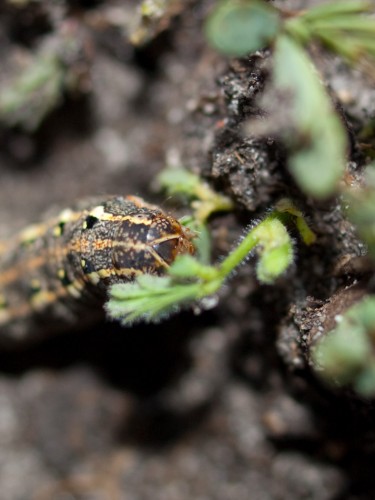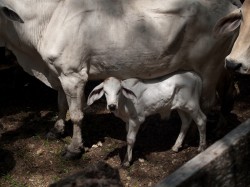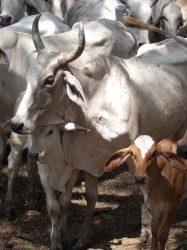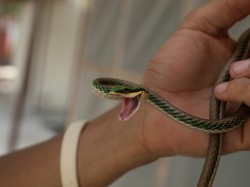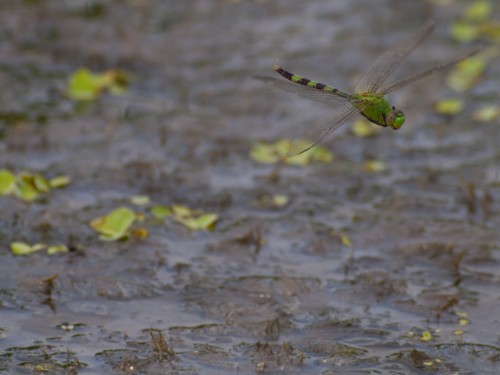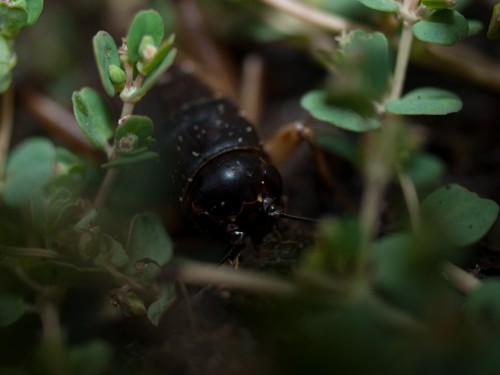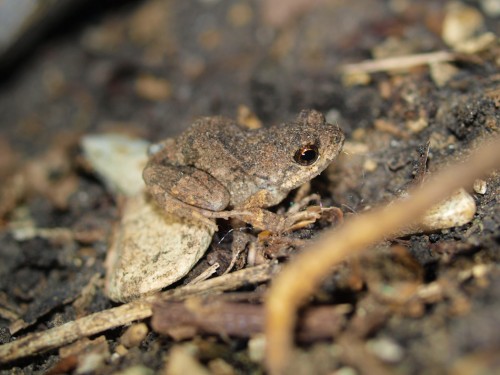In my second attempt at doing some time lapse photography, I captured both the sunset and the following sunrise.
Tag Archives: Palo Verde
Boa finds a Boa
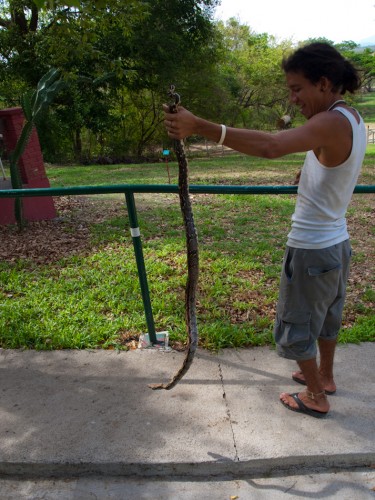 A few days ago, Boa (named so for several non-mutually exclusive reasons: (1) he loves boas, (2) he has a boa tattoo on his back and (3) he’s crazy…) found a Boa constrictor. He also found a Paint Wood Turtle, both at the amphibian drift fences that he checks twice daily. He immediately ran back to the station to share the excitement, once again. It was my first sighting of a wild Boa and now it’s actually being housed in our shared bedroom; Boa determined that the snake was sick, and is attempting to nurse it back to health.
A few days ago, Boa (named so for several non-mutually exclusive reasons: (1) he loves boas, (2) he has a boa tattoo on his back and (3) he’s crazy…) found a Boa constrictor. He also found a Paint Wood Turtle, both at the amphibian drift fences that he checks twice daily. He immediately ran back to the station to share the excitement, once again. It was my first sighting of a wild Boa and now it’s actually being housed in our shared bedroom; Boa determined that the snake was sick, and is attempting to nurse it back to health.
This morning, we fed it a Mexican Mouse Opossum, but there were too many people watching and Eva (the snake’s name) release the marsupial and hasn’t ingested it.
I’m posting several pictures with Boa because he’s been advertising Montegraphia.com to tourists, groups and friends.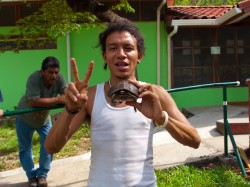
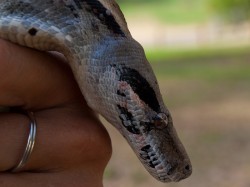
Calves
Branding time
While collecting frogs from a drift fence, a herd of 400 cattle loudly stomped passed us. It was somewhat frightening to be in the path of so many large vertebrates that were running blindly through the dry forest from ranchers. The ranchers herded the cattle to the Palo Verde MINAE station to they could brand the sub-adults. Boa and I watched while sitting on the fence as the unbranded cattle were roped and unwillingly dragged from the herd by a horse.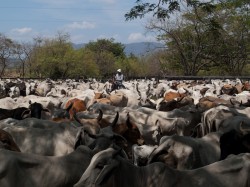
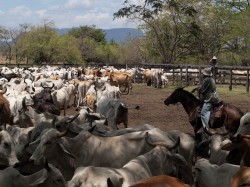
Leptophis mexicanus
Ecology is hard
When I downloaded this photograph, I noticed that there is alot going on in it.
I have taken a few photos of wetland plants for identification purposes, and I keyed this little floating plant (well, the larger one of the two…. I think the smaller one is either Lemna aequinactialis or Spirodela polyrhiza [Duckweed]) to Limnobium laevigatum. After I keyed it out, I noticed the aphids or other sucking bug, and then I noticed the fly in the upper left. It was hard enough to key the one plant out… now I have two plants in one picture, potentially competing, a herbivore concentrated on one plant, and another spectating insect that could itself and/or its larva be a predator on the herbivore!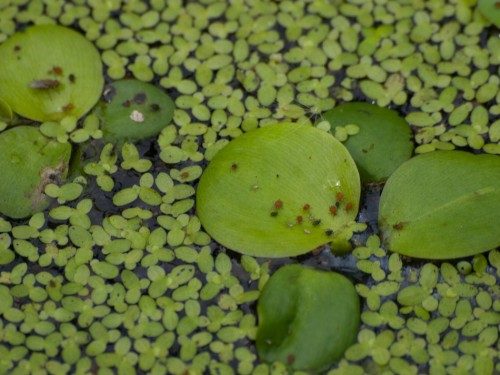
What’s up now agile dragonfly?
These dragonflies and several other species are common within Palo Verde. As I walk to the wetland, there are several patches along the road that will have 20 or so dragonflies hovering about, searching for prey. Many times, they will follow me a short distance, likely because I tend to stir up prey items for them. I’ve observed several successful predation attempts, but only on moths. In one instance, a moth, sipping water from a small puddle in the road, began to fly and was immediately hit twice by a dragonfly. The dragonfly was unsuccessful in both attempts to effectively capture the moth, and the moth appeared to respond by limply dropping to the ground, where it sat frozen for a short time. The dragonfly seemed to loose sight of the moth at this point and flew off. The second the moth began to move to fly away, the dragonfly sped back and nailed the moth, capturing the absent-minded prey with its legs and flying off for consumption. I wonder if they consume on the fly?
Crickets are just as abundant
Another macro shot of another insect grazer (or detritivore). There are so many crickets hiding under decomposing cattail (Typha domingensis) and other wetland plants, that you can literally hear them scurry as you pass a clump of detritus. When I first heard the noise, I thought it was the constant, strong wind from the east. After hearing the noise without wind, I thought it may be a snake or other herp (that’s actually how I found the turtle here; I heard it walking) and was immediately excited to discover a new species… I did alright, hundreds of crickets of various species. Unfortunately, I don’t have The Orthoptera of Costa Rica: A Jumping Insect between Two Continents, between Two Seas.
I don’t know
Caterpillars
I think they are eating my Neptunia! The caterpillars can be found with every step in the dried lagoon. I wonder when and where they pupate. Do they pupate before the lagoon floods, and, if so, do they do so in the lagoon? Are they able to survive the flooded lagoon either as pupa or larva? How can I answer these questions?